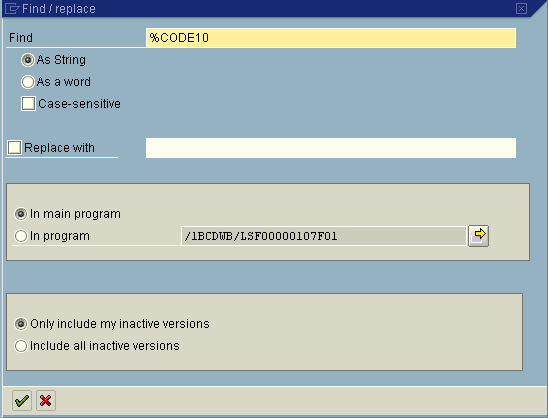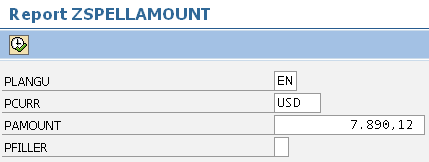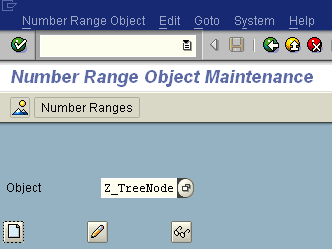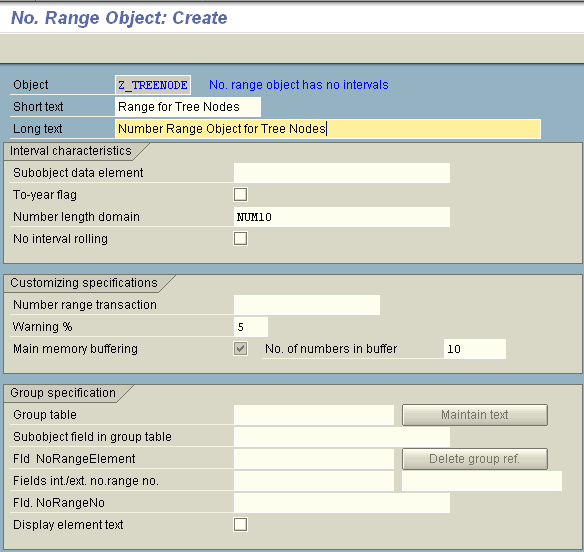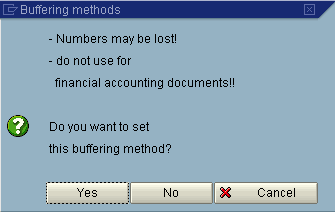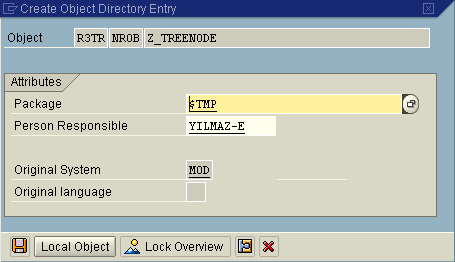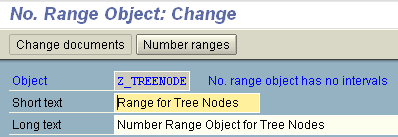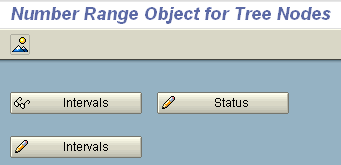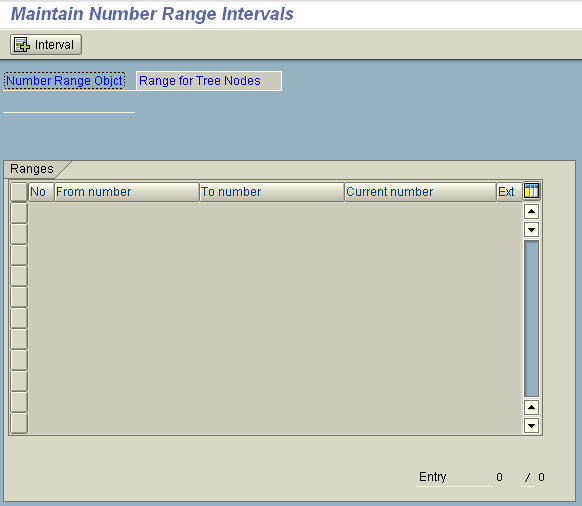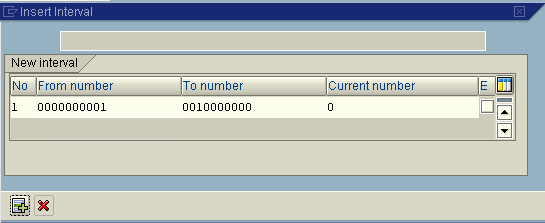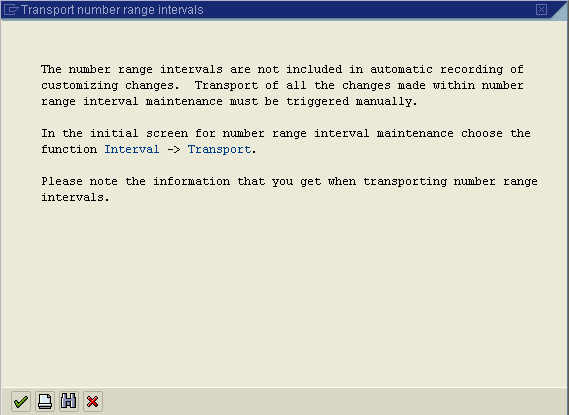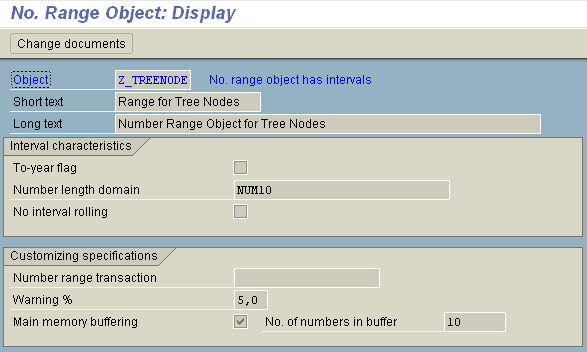TYPE-POOLS : abap.
FIELD-SYMBOLS: <dyn_table> TYPE STANDARD TABLE,
<dyn_wa>,
<dyn_field>.
DATA: dy_table TYPE REF TO data,
dy_line TYPE REF TO data,
xfc TYPE lvc_s_fcat,
ifc TYPE lvc_t_fcat.
SELECTION-SCREEN BEGIN OF BLOCK b1 WITH FRAME.
PARAMETERS: p_table(30) TYPE c DEFAULT 'T001'.
SELECTION-SCREEN END OF BLOCK b1.
START-OF-SELECTION.
PERFORM get_structure.
PERFORM create_dynamic_itab.
*******Creates a dynamic internal table*********
PERFORM get_data.
PERFORM write_out.
*&---------------------------------------------------------------------*
*& Form get_structure
*&---------------------------------------------------------------------*
FORM get_structure.
DATA : idetails TYPE abap_compdescr_tab,
xdetails TYPE abap_compdescr.
DATA : ref_table_des TYPE REF TO cl_abap_structdescr.
* Get the structure of the table.
ref_table_des ?=
cl_abap_typedescr=>describe_by_name( p_table ).
idetails[] = ref_table_des->components[].
LOOP AT idetails INTO xdetails.
CLEAR xfc.
xfc-fieldname = xdetails-name .
CASE xdetails-type_kind.
WHEN 'C'.
xfc-datatype = 'CHAR'.
WHEN 'N'.
xfc-datatype = 'NUMC'.
WHEN 'D'.
xfc-datatype = 'DATE'.
WHEN 'P'.
xfc-datatype = 'PACK'.
WHEN OTHERS.
xfc-datatype = xdetails-type_kind.
ENDCASE.
xfc-inttype = xdetails-type_kind.
xfc-intlen = xdetails-length.
xfc-decimals = xdetails-decimals.
APPEND xfc TO ifc.
ENDLOOP.
ENDFORM. "get_structure
*&---------------------------------------------------------------------*
*& Form create_dynamic_itab
*&---------------------------------------------------------------------*
FORM create_dynamic_itab.
* Create dynamic internal table and assign to FS
CALL METHOD cl_alv_table_create=>create_dynamic_table
EXPORTING
it_fieldcatalog = ifc
i_length_in_byte = 'X' "added by Paul Robert Oct 28, 2009 17:04
IMPORTING
ep_table = dy_table.
ASSIGN dy_table->* TO <dyn_table>.
* Create dynamic work area and assign to FS
CREATE DATA dy_line LIKE LINE OF <dyn_table>.
ASSIGN dy_line->* TO <dyn_wa>.
ENDFORM. "create_dynamic_itab
*&---------------------------------------------------------------------*
*& Form get_data
*&---------------------------------------------------------------------*
FORM get_data.
* Select Data from table.
SELECT * INTO TABLE <dyn_table>
FROM (p_table).
ENDFORM. "get_data
*&---------------------------------------------------------------------*
*& Form write_out
*&---------------------------------------------------------------------*
FORM write_out.
LOOP AT <dyn_table> INTO <dyn_wa>.
DO.
ASSIGN COMPONENT sy-index
OF STRUCTURE <dyn_wa> TO <dyn_field>.
IF sy-subrc <> 0.
EXIT.
ENDIF.
IF sy-index = 1.
WRITE:/ <dyn_field>.
ELSE.
WRITE: <dyn_field>.
ENDIF.
ENDDO.
ENDLOOP.
ENDFORM. "write_out
Nov 28, 2011
Dynamic Internal Table or Array
Nov 6, 2011
Internal table to spool
*&------------------------------------------------------------------*
*& Form SEND_TO_SPOOL
*&------------------------------------------------------------------*
* text
*-------------------------------------------------------------------*
FORM send_to_spool.
DATA: val,
pripar LIKE pri_params,
arcpar LIKE arc_params.
CALL FUNCTION 'GET_PRINT_PARAMETERS'
EXPORTING
layout = 'X_65_255'
line_count = 65
line_size = 255
IMPORTING
out_parameters = pripar
out_archive_parameters = arcpar
valid = val.
NEW-PAGE PRINT ON NEW-SECTION
PARAMETERS pripar
ARCHIVE PARAMETERS arcpar
NO DIALOG.
IF val <> space.
LOOP AT it_spool.
......
ENDLOOP.
ENDIF.
NEW-PAGE PRINT OFF.
ENDFORM. "SEND_TO_SPOOL
Oct 8, 2011
How to Debug Popup Screen in ABAP
Debugging in ABAP for ABAP developers is a vital requirement during building application in SAP systems. There are numerous ways to debug ABAP code or debug SAP screens for ABAP developers. But many ABAP programmers who are new to ABAP development may not know how to debug popup screen in SAP platform. In this short ABAP tutorial, I'll try to share you ABAP trick to debug SAP popup screens.
Please note that, this tutorial does not cover debugging using "/H" option or using break points in ABAP code. I want to concentrate on developers requirement to debug an unknown ABAP code block which they want to discover.
First step is open your Notepad application and type or copy-paste the following commands in a new blank text file.
[FUNCTION]
Command=/H
Title=Debugger
Type=SystemCommand
Then save the above text file as a batch file. You can name it as debug.bat for example.
Now ABAP developers are ready to debug a modal popup SAP screen. Let's assume that you want to debug output processing log screen for an invoice output
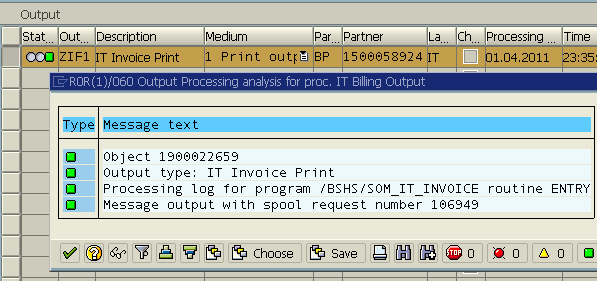
Now drag and drop debug.bat batch file from your Windows desktop onto the modal popup SAP screen.
Then the SAP GUI will inform you about the debugging status with message "Debugging switched on"

Now ABAP developers can easily activate debugging screen in ABAP on the modal popup SAP screen.
How to debug Smartforms
Debugging SmartForms using Function Module
If you want to debug Smartform document in non-modifiable client, then you can try debugging Smartforms Function Module using soft break point.
First you need to find the function module name of the target SmartForm for debugging.
If you do not know how to get the function module name of the SAP Smart Form, please read the Smart Form tutorial titled How to Find SAP SmartForms Function Module Name.
Without knowing the function module name, we can not debug SmartForms in non-modifiable clients.
After you find the function module name, we can now display the ABAP source codes of the SSF FM (Function Module) using the SAP Transaction SE37.
Within the ABAP codes of Smartform FM you can put a soft break-point any where suitable for your debugging Smartforms purposes.
It is better to copy the node name or some parts of the ABAP code in the SAP Smartform and search the text within the SE37 displayed source code of the Smartforms function module (FM).
You can place a soft break point in the source code using Ctrl+Shift+12 key combination or using the Stop icon .
Let's assume that you want to debug Smartforms codes within program lines named '%CODE10' as seen in the followin Smartform screenshot,
First click on the Search button , and not use the Ctrl+F since searc button has far more powerful functionalities than ordinary Ctrl+F search.
Enter the text you are searching in the Find text area.
You can search for the node name '%CODE10' as well as for a part of your SmartForm code.
What is important here in this Search is be sure that you selected the option "In main program".
Otherwise your search will take place only for a limited part of the Smartform function module codes.
SAP Smartforms - How to Call Smartform within Example ABAP Program
Here is an SAP Smartforms step by step example to open and call Smartform within ABAP code.
Within ABAP programs an SAP Smartform can be called and opened by calling the ABAP function SSF_FUNCTION_MODULE_NAME, we will see in the example ABAP code which is included with this Smartforms tutorial.
First, create a SAP Smartform report using ABAP transaction code "smartforms" within ABAP Editor.
Or you can use an existing simple SAP Smartforms report to call from the example ABAP program.
In this SAP SmartForms tutorial, the example uses a SmartForm named "ZSMARTFORMS_SALES_DOCUMENTS".
The SmartForm application "ZSMARTFORMS_SALES_DOCUMENTS" takes a table valued parameter to use as an internal table within SmartForms ABAP codes.
This SmartForms parameter table is "it_vbak" which is declared in type table of VBAK SAP Sales and Distribution table.
SAP VBAK table is contains Sales Document header data.
As you will see in the below ABAP codes, the program select a range of VBAK Sales Document records into an internal table variable it_vbak.
Later the variable table is passed to the SAP SmartForm as a TABLE argument.
It is important that the table variable is correctly declared within the Smartform 's "Global Settings > Form Interface > Tables" section.
As you will see in the below screenshot, it_vbak is declared as :
IT_VBAK TYPE VBAK
Example ABAP Program to Call Smartform
Here is the example ABAP code to call SAP SmarForms from a program or an ABAP report.
Please note that we have ABAP codes which call ABAP function SSF_FUNCTION_MODULE_NAME with formname parameter is set to the target SAP Smartforms document.
The SSF_FUNCTION_MODULE_NAME ABAP call returns the FM_NAME which is the compiled ABAP program identifier and is in type rs38l_fnam.
The returned fm_name variable is then called using an ABAP Call Function method to open Smartform.
While calling Smartform, the Table parameter is passed as an input argument.
*&--------------------------------------------------------------*
*& Report Z_CALL_SMARTFORM *
*& Sample Function calls ZSMARTFORMS_SALES_DOCUMENTS smartform *
*&--------------------------------------------------------------*
REPORT Z_CALL_SMARTFORM.
DATA :
fm_name TYPE rs38l_fnam,
it_vbak TYPE TABLE OF vbak.
SELECT * FROM vbak into TABLE it_vbak
WHERE vbeln GE '0100000004'
AND vbeln LE '0100000010'.
CALL FUNCTION 'SSF_FUNCTION_MODULE_NAME'
EXPORTING
formname = 'ZSMARTFORMS_SALES_DOCUMENTS'
IMPORTING
FM_NAME = fm_name
EXCEPTIONS
NO_FORM = 1
NO_FUNCTION_MODULE = 2
OTHERS = 3.
CALL FUNCTION fm_name
TABLES
it_vbak = it_vbak
EXCEPTIONS
FORMATTING_ERROR = 1
INTERNAL_ERROR = 2
SEND_ERROR = 3
USER_CANCELED = 4
OTHERS = 5.
I hope, SAP Smartforms developers will find this sample ABAP code useful as beginning to SAP Smartforms.
How to Spell Numbers using ABAP Spell_Amount Function Module
SAP professionals can use ABAP Spell_Amount function module in order to spell numbers and currency values into string variables. It is very easy in different languages the answer of "How to Spell Numbers in SAP" using Spell_Amount ABAP function module.
In this ABAP tutorial, developers will find a sample ABAP report using Spell_Amount to convert numeric value or currency amount entered in the selection screen into string and display on the screen using Write command
What makes Spell_Amount perfect for spelling price, amount fields and number values is it can spell in different languages. The Spell_Amount function module excepts a Language input parameter and returns the spell in the input language. Either German, English, Turkish, Spanish, Russian, ABAP developers can easily return decimal values and integer part of the number seperately easily.
Since the Spell_Amount return a SPELL type structure, developers should be aware of both fields word and decword of the output structure. The decword will return limited values from 0 to 99 for example. But the integer part word can handle greater numeric values.
Here is the ABAP report source code that ABAP developers can use in order to convert numeric values, numbers and currencies into string. The following ABAP report is using Spell_Amount in order to spell numbers into string variables and display on the output screen.
PARAMETERS:
pLANGU LIKE T002-SPRAS DEFAULT SY-LANGU,
pCURR LIKE TCURC-WAERS DEFAULT 'USD',
pAMOUNT LIKE VBAP-MWSBP ,
pFILLER(1) TYPE C DEFAULT ' '.
DATA :
WS_SPELL TYPE SPELL.
CALL FUNCTION 'SPELL_AMOUNT'
EXPORTING
AMOUNT = pAMOUNT
CURRENCY = pCURR
FILLER = pFILLER
LANGUAGE = pLANGU "SY-LANGU
IMPORTING
IN_WORDS = WS_SPELL
EXCEPTIONS
NOT_FOUND = 1
TOO_LARGE = 2
OTHERS = 3
.
IF sy-subrc <> 0.
MESSAGE ID SY-MSGID TYPE SY-MSGTY NUMBER SY-MSGNO
WITH SY-MSGV1 SY-MSGV2 SY-MSGV3 SY-MSGV4.
ELSE.
WRITE :/ WS_SPELL-word , WS_SPELL-decword.
ENDIF.
Here is the selection screen of the ABAP report ZSPELLAMOUNT.
And this is the output screen displaying the spelling of input number value in given language
Create Number Range Object using SAP Transaction Code SNRO
Actually an auto incrementa field is a general requirement for al developers in all development environments and platforms
In SAP environment the solution is creating to create number range object and use number range object in ABAP codes for ABAP developers
Actually, database providers like Microsoft SQL Server and Oracle have more advanced solutions for such requirements that does not require maintanence and so much steps in number range creation process.
Let's start our task in this SAP tutorial, number range creation using SNRO SAP Transaction code.
Step by step Number Range Creation using SNRO SAP Transaction
In SAP Easy Access screen, call SAP transaction code SNRO
Enter Number Range name in the Number Range Object input text field.
Enter Short Text and Long Text descriptive texts for Number Range Object.
Enter a number length domain for the number range object
If you want a warning define an integer smaller than 100 in the Warning % field.
You can enter 5 or 10 as common warning percentage values.
Click on the Save button 
Click on Yes button to continue.
The next screen displayed is Create Object Directory Entry screen.
I select Local Object
Now the Change documents and Number ranges buttons are displayed in the Number Range Object : Change SAP screen.
Click on "Number ranges" button.
Click on Change Intervals buttons.
Click on "Add Interval" button
Enter an integer number like 1 at interval number and a range of numbers with integer values identifying from number and to number. If you have entered required fields press Enter button.
Click on "Save" button. And the number range interval you have just declared will be listed in the Number Range object 's number intervals list.
The following "Transport number range intervals" warning screen is displayed.
The number range intervals are not included in automatic recording of customizing changes. Transport of all the changes made within number range interval maintenance must be triggered manually.
In the initial screen for number range interval maintenance choose the function Interval -> Transport.
Please note the information that you get when transporting number range intervals.
Here is the display screen of the Number Range object.
SAP professionals and ABAP developers have seen how to create Number Range Object till this point in this SAP tutorial.
Now ABAP developers are readyto go further and learn how to use number range objects in ABAP code.
Key ABAP function for implementing and using a number range in ABAP codes is NUMBER_GET_NEXT ABAP function.
In order to use a number range for auto increment column numbers safely in SAP, NUMBER_GET_NEXT ABAP function is used with NUMBER_RANGE_ENQUEUE and NUMBER_RANGE_DEQUEUE.
ABAP developers can copy and paste the following ABAP report source code and execute the ABAP program in their development and test environments.
The sample ABAP report reads the next number in an SAP Number Range Object and displays the auto number value on the screen.
The ABAP NUMBER_RANGE_ENQUEUE function sets a lock on the number range object.
If the lock is successfully set on the SAP number range, using NUMBER_GET_NEXT function call the next number in the number range interval is read and passed into an ABAP variable.
The last step is calling NUMBER_RANGE_DEQUEUE function and removing the loc on the relate SAP number range object.
REPORT ztreenodes .
" INRI : Number ranges function module interface structure
CONSTANTS :
" Name of number range object - CHAR 10
c_rangeobj LIKE inri-object VALUE 'Z_TREENODE',
" Number range number - CHAR 2
c_rangeno LIKE inri-nrrangenr VALUE '1'.
DATA : " NodeId from Number Generator Object
gv_nodeid TYPE i.
START-OF-SELECTION.
PERFORM nextnum USING gv_nodeid c_rangeobj c_rangeno.
WRITE gv_nodeid.
END-OF-SELECTION.
FORM nextnum USING
le_nextnum TYPE i
le_rangeobj LIKE inri-object
le_rangeno LIKE inri-nrrangenr.
DATA :
lv_nextnum TYPE i.
CALL FUNCTION 'NUMBER_RANGE_ENQUEUE'
EXPORTING
object = le_rangeobj
EXCEPTIONS
foreign_lock = 1
object_not_found = 2
system_failure = 3
OTHERS = 4.
IF sy-subrc NE 0.
* message e086 with 'Lock error' sy-subrc.
ENDIF.
CALL FUNCTION 'NUMBER_GET_NEXT'
EXPORTING
nr_range_nr = le_rangeno
object = le_rangeobj
* QUANTITY = '1'
* SUBOBJECT = ' '
* TOYEAR = '0000'
* IGNORE_BUFFER = ' '
IMPORTING
number = lv_nextnum " Number generated by Range Generator Object
* QUANTITY =
* RETURNCODE = lv_returncode
EXCEPTIONS
interval_not_found = 1
number_range_not_intern = 2
object_not_found = 3
quantity_is_0 = 4
quantity_is_not_1 = 5
interval_overflow = 6
buffer_overflow = 7
OTHERS = 8.
IF sy-subrc <> 0.
* MESSAGE ID SY-MSGID TYPE SY-MSGTY NUMBER SY-MSGNO
* WITH SY-MSGV1 SY-MSGV2 SY-MSGV3 SY-MSGV4.
ENDIF.
CALL FUNCTION 'NUMBER_RANGE_DEQUEUE'
EXPORTING
object = le_rangeobj.
IF sy-subrc <> 0.
MESSAGE ID sy-msgid TYPE sy-msgty NUMBER sy-msgno
WITH sy-msgv1 sy-msgv2 sy-msgv3 sy-msgv4.
ENDIF.
le_nextnum = lv_nextnum.
ENDFORM. " NEXTNUM
I hope ABAP developers will fing this number range and NUMBER_GET_NEXT function call implementation useful.
Aug 24, 2011
Program to Hide ABAP's Source Code and Protect it
Protect ABAP program with this code
REPORT zproghide NO STANDARD PAGE HEADING.
************************************************************************
* This program hides any ABAP's source code and protects it with a
* password in this source code.
*
* After hiding, you can still run the abap (the load version is intact)
* but it cannot be displayed, edited, traced, transported or generated.
*
* If the ABAP is not hidden, the program hides it, if it is hidden, it
* unhide it.
* Remember to hide this program first!
************************************************************************
SELECTION-SCREEN BEGIN OF BLOCK block.
PARAMETERS: program(30) OBLIGATORY.
SELECTION-SCREEN BEGIN OF LINE.
SELECTION-SCREEN COMMENT 1(8) pwd.
SELECTION-SCREEN POSITION 35.
PARAMETERS: password(8) MODIF ID aaa.
SELECTION-SCREEN END OF LINE.
SELECTION-SCREEN END OF BLOCK block.
*
DATA: message(60) TYPE c.
*
AT SELECTION-SCREEN OUTPUT.
LOOP AT SCREEN.
IF screen-group1 = 'AAA'.
screen-invisible = '1'.
MODIFY SCREEN.
ENDIF.
ENDLOOP.
*
INITIALIZATION.
pwd = 'Password'.
*
START-OF-SELECTION.
TABLES: trdir.
* User name and password check
IF password <> 'ABCDEFG'.
WRITE: / 'Wrong password'.
EXIT.
ENDIF.
* SAP owned?
IF NOT program CP 'Z*' AND NOT program CP 'Y*'.
WRITE: / 'Do not hide original SAP programs!'.
EXIT.
ENDIF.
* Exists?
SELECT SINGLE * FROM trdir WHERE name = program.
IF sy-subrc <> 0.
WRITE: / 'Program does not exists!'.
EXIT.
ENDIF.
* Does it have a current generated version?
DATA: f1 TYPE d, f3 TYPE d.
DATA: f2 TYPE t, f4 TYPE t.
EXEC SQL.
SELECT UDAT, UTIME, SDAT, STIME INTO :F1, :F2, :F3, :F4 FROM D010LINF
WHERE PROG = :PROGRAM
ENDEXEC.
IF f1 < f3 OR ( f1 = f3 AND f2 < f4 ).
WRITE: / 'The program has no recent generated version!'.
EXIT.
ENDIF.
* Compose a new program name
DATA: new_name(30), i TYPE i, j TYPE i.
new_name = program.
DO 30 TIMES.
i = sy-index - 1.
new_name+i(1) = '_'.
* Search for acceptable program name variations
j = 0.
SELECT * FROM trdir WHERE name LIKE new_name.
j = j + 1.
ENDSELECT.
IF j = 1.
EXIT.
ENDIF.
new_name = program.
ENDDO.
* Cannot generate appropriate program name
IF j > 1.
WRITE: / 'Cannot generate appropriate program name'.
EXIT.
ENDIF.
* Check if it is already hidden
DATA: f5(30).
EXEC SQL.
SELECT PROG INTO :F5 FROM D010S WHERE PROG = :NEW_NAME
ENDEXEC.
IF f5 IS INITIAL.
* There is no such hidden program, hide it
EXEC SQL.
UPDATE D010S SET PROG = :NEW_NAME WHERE PROG = :PROGRAM
ENDEXEC.
CONCATENATE 'Program' :program 'was hidden.'
INTO message SEPARATED BY space.
ELSE.
* There is already a hidden program there, unhide it
EXEC SQL.
UPDATE D010S SET PROG = :PROGRAM WHERE PROG = :NEW_NAME
ENDEXEC.
CONCATENATE 'Program' :program 'was restored.'
INTO message SEPARATED BY space.
ENDIF.
WRITE message.
*** end of program
How To Get The Records from the XML File
Use these routines to get data/ records from XML
PERFORM f_parse_file USING wv_pifile
CHANGING wt_xml_table
wt_errdata .
*READ DATA FROM TEMPORARY INTERNAL TABLE TO FINAL STRUCTURE
PERFORM f_create_file USING wt_xml_table
CHANGING wa_liste_evt .
*&---------------------------------------------------------------------*
*& Form F_PARSE_FILE
*&---------------------------------------------------------------------*
* text
*----------------------------------------------------------------------*
* -->FPU_PIFILE text
* -->FPC_WT_XML text
* -->FPC_WT_ERRDATA text
*----------------------------------------------------------------------*
FORM f_parse_file USING fpu_pifile TYPE string
CHANGING fpc_wt_xml TYPE tt_xml_table
fpc_wt_errdata TYPE tt_errdata.
DATA: lo_pixml TYPE REF TO if_ixml,
lo_pdocument TYPE REF TO if_ixml_document,
lo_pstreamfactory TYPE REF TO if_ixml_stream_factory,
lo_pistream TYPE REF TO if_ixml_istream,
lo_pparser TYPE REF TO if_ixml_parser,
lo_pnode TYPE REF TO if_ixml_node,
lo_pparseerror TYPE REF TO if_ixml_parse_error,
wlv_string TYPE string,
wlv_count TYPE i,
wlv_index TYPE i,
wlv_totalsize TYPE i,
wlt_xml_c TYPE STANDARD TABLE OF t_xml_c,
wlt_xml_x TYPE STANDARD TABLE OF t_xml_x,
wlv_xstring TYPE xstring,
wla_errdata TYPE t_errdata.
*READ PHYSICAL FILE TO AN INTERNAL TABLE
PERFORM f_read_file USING fpu_pifile
CHANGING wlt_xml_c .
*CONVERT TEXT TO XSTRING FORMAT
IF NOT wlt_xml_c IS INITIAL.
CALL FUNCTION 'SCMS_TEXT_TO_XSTRING'
IMPORTING
buffer = wlv_xstring
TABLES
text_tab = wlt_xml_c
EXCEPTIONS
failed = 1.
IF sy-subrc <> 0.
MESSAGE e030 WITH p_file.
ENDIF.
ELSE.
MESSAGE e020 WITH p_file.
ENDIF.
*Convert xstring to binary
CALL FUNCTION 'SCMS_XSTRING_TO_BINARY'
EXPORTING
buffer = wlv_xstring
IMPORTING
output_length = wlv_totalsize
TABLES
binary_tab = wlt_xml_x.
*-- CREATE THE MAIN FACTORY
lo_pixml = cl_ixml=>create( ).
*-- CREATE THE INITIAL DOCUMENT
lo_pdocument = lo_pixml->create_document( ).
*-- CREATE THE STREAM FACTORY
lo_pstreamfactory = lo_pixml->create_stream_factory( ).
*-- CREATE AN INPUT STREAM FOR THE TABLE
lo_pistream = lo_pstreamfactory->create_istream_itable( table =
wlt_xml_x
size =
wlv_totalsize
).
*-- CREATE THE PARSER
lo_pparser = lo_pixml->create_parser( stream_factory =
lo_pstreamfactory
istream = lo_pistream
document = lo_pdocument ).
*-- PARSE THE STREAM
IF lo_pparser->parse( ) NE 0.
*Error handling for parser object
IF lo_pparser->num_errors( ) NE 0.
wlv_count = lo_pparser->num_errors( ).
wlv_index = 0.
WHILE wlv_index < wlv_count.
lo_pparseerror = lo_pparser->get_error( index = wlv_index ).
wlv_string = lo_pparseerror->get_reason( ).
TRANSLATE wlv_string TO UPPER CASE.
*Gets the error description updated in the Error table
CONCATENATE text-001 wc_colon wlv_string INTO wla_errdata-value.
wla_errdata-typ = wc_err.
APPEND wla_errdata TO fpc_wt_errdata. CLEAR wla_errdata.
wlv_index = wlv_index + 1.
ENDWHILE.
ENDIF.
ENDIF.
*-- THE STREAM IS NO LONGER NEEDED, SO CLOSE IT...
CALL METHOD lo_pistream->close( ).
CLEAR lo_pistream.
*IF COUNT > 0 THEN THE XML FILE HAD TROUBLES LIKE INCOMPLETE TAGS,
*MISSING PARTS, ETC.
IF wlv_count > 0.
EXIT.
ENDIF.
*-- PUT THE WHOLE DOM TREE AS A LIST...
lo_pnode = lo_pdocument.
* GETS THE TYPE AND VALUE OF EACH NODE OF THE DOCUMENT
PERFORM f_fill_table USING lo_pnode
CHANGING fpc_wt_xml .
FREE : wlt_xml_c, wlt_xml_x.
ENDFORM. " F_READ_FILE
*&---------------------------------------------------------------------*
*& FORM F_FILL_TABLE
*&---------------------------------------------------------------------*
* GETS THE TYPE AND VALUE OF EACH NODE OF THE DOCUMENT
*----------------------------------------------------------------------*
* -->FPU_WL_PNODE NODE
* <--FPC_WT_XML_TABLE OUTPUT TABLE WITH ALL THE NODES IN TABULAR FORM
*----------------------------------------------------------------------*
FORM f_fill_table USING value(fpu_wl_pnode) TYPE REF TO if_ixml_node
CHANGING fpc_wt_xml_table TYPE tt_xml_table.
* LOCAL DECLARATIONS
DATA: wla_xml_wa TYPE t_xml_list,
wlv_ptext TYPE REF TO if_ixml_text,
wlv_name TYPE string,
wlv_value TYPE string.
*THIS CODE CHECKS SERIALLY EACH NODE FOR ITS TYPE AND APPENDS IN THE
*COLUMN
*ELEMENT NAME OR ELEMENT VALUE ACCORDINGLY.
CASE fpu_wl_pnode->get_type( ).
WHEN if_ixml_node=>co_node_element.
wlv_name = fpu_wl_pnode->get_name( ).
*HERE COMES THE FIELD NAME FROM THE XML FILE
wla_xml_wa-name = wlv_name.
TRANSLATE wla_xml_wa-name TO UPPER CASE.
*INSERT ALL FIELDS FROM XML INTO AN INTERNAL TABLE
APPEND wla_xml_wa TO fpc_wt_xml_table.
CLEAR wla_xml_wa.
WHEN if_ixml_node=>co_node_text.
wlv_ptext ?= fpu_wl_pnode->query_interface( ixml_iid_text ).
IF wlv_ptext->ws_only( ) IS INITIAL.
*HERE COMES THE FIELD VALUE
wlv_value = fpu_wl_pnode->get_value( ).
wla_xml_wa-value = wlv_value.
MODIFY fpc_wt_xml_table FROM wla_xml_wa
INDEX sy-tabix
TRANSPORTING value.
CLEAR wla_xml_wa.
ENDIF.
WHEN OTHERS .
*Do nothing.
ENDCASE.
fpu_wl_pnode = fpu_wl_pnode->get_first_child( ).
WHILE NOT fpu_wl_pnode IS INITIAL.
PERFORM f_fill_table USING fpu_wl_pnode
CHANGING fpc_wt_xml_table .
fpu_wl_pnode = fpu_wl_pnode->get_next( ).
ENDWHILE.
ENDFORM. " F_FILL_NODE
*&---------------------------------------------------------------------*
*& Form F_CREATE_FILE
*&---------------------------------------------------------------------*
* text
*----------------------------------------------------------------------*
* -->FPU_WT_XML_TABLE text
* -->FPC_WA_LISTE_EVT text
*----------------------------------------------------------------------*
FORM f_create_file USING fpu_wt_xml_table TYPE tt_xml_table
CHANGING fpc_wa_liste_evt TYPE t_wa_liste_evt.
FIELD-SYMBOLS : <f_fieldname> TYPE ANY,
<f_value> TYPE ANY,
<wa> TYPE ANY.
DATA : wlv_fieldname TYPE char15,
wlv_fieldvalue TYPE char20,
wlv_count TYPE i VALUE 1,
wla_xml_wa TYPE t_xml_list,
wla_psl TYPE t_wa_psl ,
wla_evt TYPE t_evt.
DATA : BEGIN OF wlt_psl,
psl TYPE tt_psl,
END OF wlt_psl.
LOOP AT fpu_wt_xml_table INTO wla_xml_wa FROM 3.
*THIS CODE WILL FILL THE WA FOR LEVEL 2 DATA OF TECH SPECS
IF wla_xml_wa-name = wc_flg_typ OR
wla_xml_wa-name = wc_cod_soc OR
wla_xml_wa-name = wc_num_uat_tc OR
wla_xml_wa-name = wc_dat_etd OR
wla_xml_wa-name = wc_num_evt.
wlv_fieldname = wla_xml_wa-name.
wlv_fieldvalue = wla_xml_wa-value.
CONDENSE wlv_fieldname.
ASSIGN wlv_fieldname TO <f_fieldname>.
ASSIGN wlv_fieldvalue TO <f_value>.
ASSIGN COMPONENT <f_fieldname> OF STRUCTURE wla_evt TO <wa>.
<wa> = <f_value>.
UNASSIGN : <wa>, <f_fieldname>, <f_value>.
CLEAR : wlv_fieldname, wlv_fieldvalue .
ELSEIF
*THIS CODE WILL FILL THE LEVEL 5 DATA OF THE TECH SPECS
wla_xml_wa-name = wc_num_ord OR
wla_xml_wa-name = wc_cod_psl OR
wla_xml_wa-name = wc_lib_psl OR
wla_xml_wa-name = wc_cod_pro OR
wla_xml_wa-name = wc_cod_sta OR
wla_xml_wa-name = wc_dat_prv OR
wla_xml_wa-name = wc_dat_prv_rea OR
wla_xml_wa-name = wc_dat_eff OR
wla_xml_wa-name = wc_dat_cre OR
wla_xml_wa-name = wc_com1 OR
wla_xml_wa-name = wc_flg_ale OR
wla_xml_wa-name = wc_cod_inct OR
wla_xml_wa-name = wc_cod_vil OR
wla_xml_wa-name = wc_cod_trs OR
wla_xml_wa-name = wc_cod_trs_mlt_stp .
* ASSIGN FIELD NAME TO FIELD SYMBOL
wlv_fieldname = wla_xml_wa-name.
* ASSIGN FIELD VALUE TO FIELD SYMBOL
wlv_fieldvalue = wla_xml_wa-value.
CONDENSE wlv_fieldname.
*USE FIELD SYMBOLS TO FILL THE VALUES FROM
*WL_XML_WA TO STRUCTURE WA_LISTE_EVT
ASSIGN wlv_fieldname TO <f_fieldname>.
ASSIGN wlv_fieldvalue TO <f_value>.
ASSIGN COMPONENT <f_fieldname> OF STRUCTURE wla_psl TO <wa>.
<wa> = <f_value>.
*APPEND LINE OF WA_PSL TO TABLE WT_PSL-PSL
IF wlv_fieldname = wc_cod_trs_mlt_stp.
APPEND wla_psl TO wlt_psl-psl.
CLEAR wla_psl.
*COUNTER TO SURPASS THE FIRST OCCURENCE OF FIELDNAME 'EVT'
wlv_count = wlv_count + 1.
ENDIF.
UNASSIGN : <wa>, <f_fieldname>, <f_value>.
CLEAR : wlv_fieldname, wlv_fieldvalue .
ELSEIF
* TO APPEND ALL THE PSL ITEMS FOR SINGLE LINE OF EVT
* WLV_COUNT <> 1 MEANS OCCURENCE OF NEW DATA FOR LEVEL2 OF TS
wla_xml_wa-name = wc_evt AND wlv_count <> 1.
APPEND LINES OF wlt_psl-psl TO wla_evt-liste_psl-psl.
APPEND wla_evt TO fpc_wa_liste_evt-liste_evt-evt.
CLEAR : wlt_psl-psl[], wla_evt .
ENDIF.
ENDLOOP.
* TO APPEND THE LAST RECORD TO LEVEL 2 AND LEVEL 4 OF TS
APPEND LINES OF wlt_psl-psl TO wla_evt-liste_psl-psl.
APPEND wla_evt TO fpc_wa_liste_evt-liste_evt-evt.
CLEAR wla_evt .
FREE : wlt_psl-psl[].
ENDFORM. " F_CREATE_FILE
Aug 23, 2011
Debugging workflows and generating sub-workflows
- Switch the event trace ON (Tcode SWELS), carry out your transaction and view the event log (Tcode SWEL).
- If there is a standard event then the trace will tell you the name of the object and the event raised.
- Otherwise create your own object and events and trigger it (them) using FM "SWE_EVENT_CREATE".

